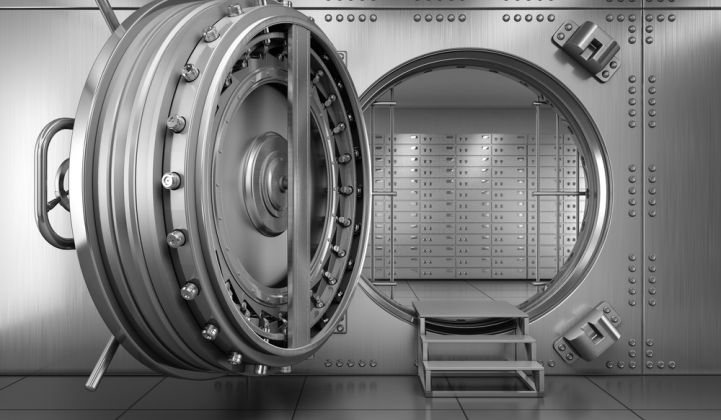No, you can’t deposit your money in a bank powered solely by wind and solar -- but that’s not what the New York Green Bank (NY Green Bank) is about. This bank manages a pool of state money designated to help finance private sector renewable energy, energy efficiency and other clean energy projects that may not otherwise be efficiently financed by commercial entities.
“We’re officially open for business. It is exciting! About a month and half ago we put $200 million on the street with a fairly open-ended solicitation,” said Jessica Aldridge, a financial analyst at the bank.
The NY Green Bank is asking private-sector capital providers and other clean energy industry participants to propose financing arrangements that would facilitate greater deployment of clean energy technologies in projects across New York state. A wide range of projects and technologies could qualify for NY Green Bank support -- a non-exhaustive list can be found here.
“Market players often ask what our main areas of focus are with this fund. The best answer is really to turn around and ask them, 'What are your areas of focus now? Where are you having success in clean energy markets but that success is limited by capital availability?'” said Aldridge.
“We’ve had a few hundred conversations over the past six months, so some conversations are educational and others are more advanced. We’re actively working on proposed deals and are operating like any other commercial fund would operate: seeking a minimum rate of return on our investments to cover any anticipated losses,” she explained.
Some private sector financiers have been apprehensive about being crowded out of renewable energy or energy-efficiency project finance markets. “That is exactly the opposite of our intentions with NY Green Bank. We are in the crowding-in business: co-investing with private sector parties to expand their ability to do even more good business,” Aldridge said. “Often, developers cannot predict which projects will be able to get the attention of traditional lenders, given the smaller size or structural complexity of certain deals.” Addressing these issues and other market barriers preventing the widespread deployment of clean energy technologies is the rationale behind forming the NY Green Bank in the first place.
Which Projects Qualify?
The parameters for NY Green Bank transactions are clearly laid out in its short solicitation document, which can be found here. “What are the clean energy benefits? What about scalability -- is there an ability to replicate the model? We lay out how we’ll evaluate potential transactions [in the RFP]. We want to incubate and drive scale in underserved transaction types like lending to biomass projects or pooled corporate energy efficiency savings agreements,” said Aldridge.
Even with attractive subsidies available to enhance the economics, there are credit-worthy projects that have trouble getting financing because markets remain fragmented and illiquid, she said.
Educating the public and some market participants has been one of NY Green Bank’s challenges so far. “We’re trying to do something pretty innovative with this fund, so we need to spend a lot of time with the markets and getting the word out.”
“There is no public information on the deals currently in the works, but we have gotten great feedback from our discussions and expect to close some transactions in the near future,” Aldridge said.
“This is a very critical time for the Green Bank. As we do our first deals, it will be helpful from a public education standpoint, because then we’ll have something to point to.”
***
Editor's note: This article is reposted from Breaking Energy. Author credit goes to Jared Anderson.



